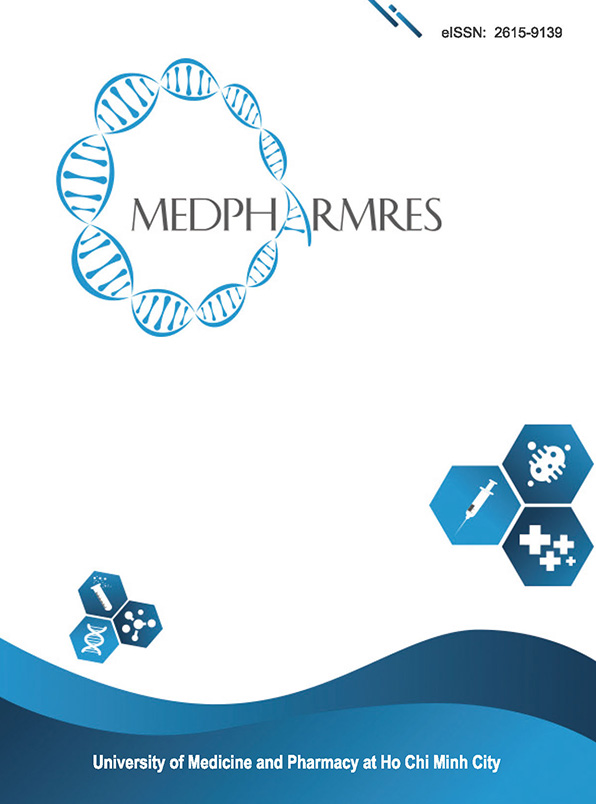Investigating the effect of processing conditions on the content of glycyrrhizic acid in licorice (Radix et Rhizoma Glycyrrhizae)
Tóm tắt
Introduction:Licorice is the root of Glycyrrhiza uralensis Fisch or Glycyrrhizae inflata L. or Glycyrrhiziae glabra L. It was a familiar medicinal herb in traditional medicine, which was commonly used in two different forms raw licorice (Sinh Cam thao) and honey-fried licorice (Chich Cam thao), with completely different effects. The processing enhanced the impact on the Spleen and Stomach organs and tonified Qi but reduced the bioactivities of clearing heat, antitussive, and detoxifying. The purpose of this study was to propose a processing method that minimizes the degradation of the main bioactive compound, glycyrrhizic acid in licorice.
Methods:Honey-fired licorice was processed according to the guidance of Circular 30/2017/TT-BYT of the Vietnamese Ministry of Health. The frying conditions such as frying temperature, honey soaking time, the ratio of honey to licorice, and the ratio of water to honey were investigated in order. The content of glycyrrhizic acid was determined according to the process of Vietnamese Pharmacopoeia V.
Results:Glycyrrhizic acid was least decomposed when processing honey-fired licorice under the following conditions: the frying temperature of 260°C, the honey soaking time of 1 hour, the ratio of honey to licorice was 1:10, and the ratio of water to honey was 1:1.
Conclusions:The content of glycyrrhizic acid in licorice was influenced by the frying process, in which temperature was the most significant factor. Honey was an ingredient that altered the effects of licorice in traditional medicine, however, the presence of honey also contributed to the degradation of glycyrrhizic acid in this medicinal herb.

